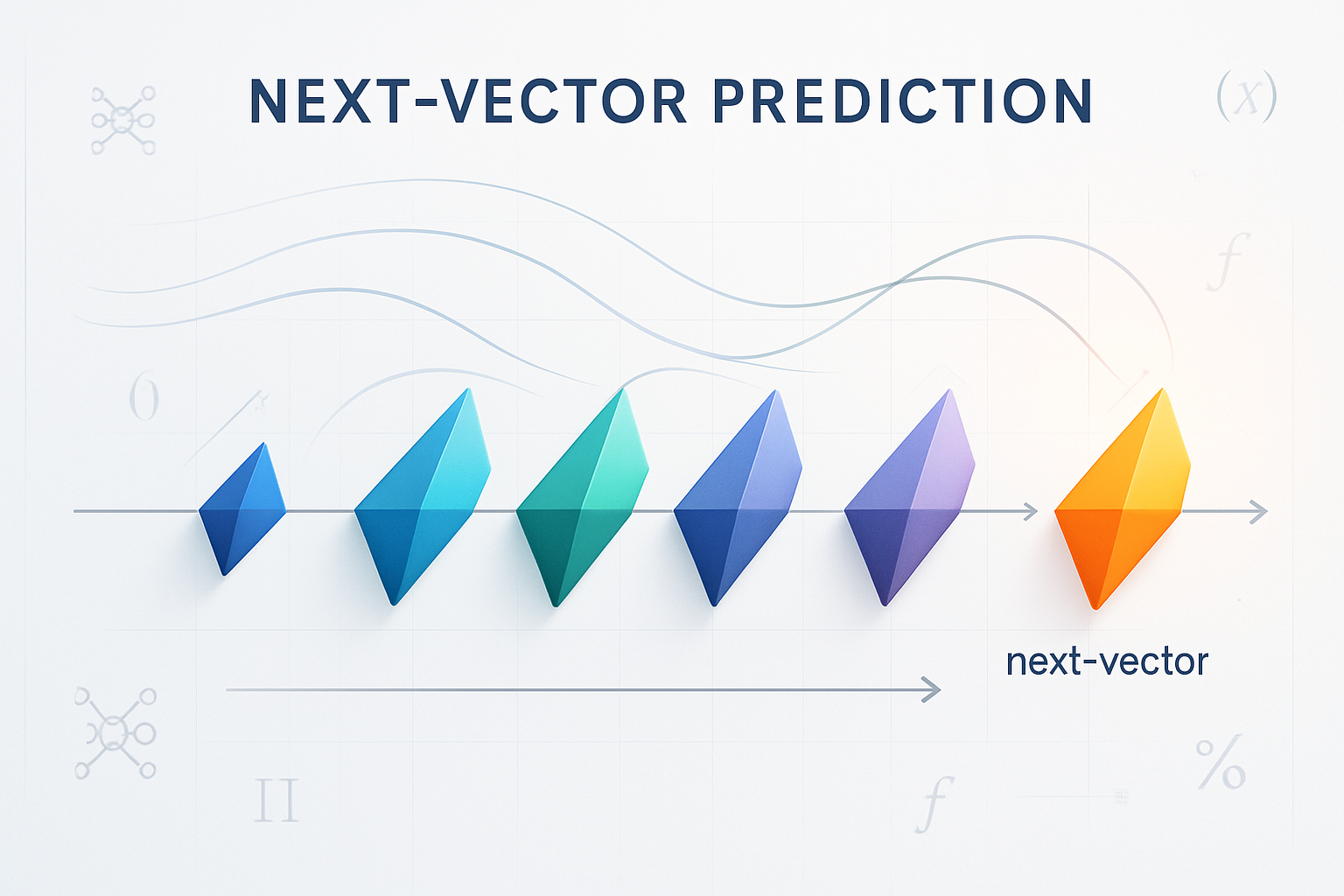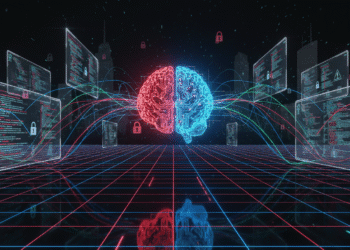A Move 37 Moment for Neural Architecture Design
In March 2016, the world watched in stunned silence as AlphaGo made Move 37—a seemingly impossible play that defied millennia of human strategic wisdom in the ancient game of Go. That audacious move, calculated by DeepMind’s AI to have only a one-in-ten-thousand chance of being played by a human, revealed strategic insights invisible to even the greatest Go masters and fundamentally redefined our understanding of machine creativity.
Now, researchers at Shanghai Jiao Tong University and SII-GAIR have orchestrated another Move 37 moment—this time in the realm of neural architecture discovery itself. Their groundbreaking system, ASI-ARCH, represents the first demonstration of Artificial Superintelligence for AI research (ASI4AI), where machines don’t merely optimize within human-designed constraints but autonomously conduct the entire scientific research process, from hypothesis generation to empirical validation.
This isn’t incremental progress. This is a paradigmatic rupture.

Beyond the Tyranny of Human-Defined Search Spaces
The evolutionary trajectory of neural architecture design has long been constrained by a fundamental bottleneck: human cognitive capacity. Traditional Neural Architecture Search (NAS) methods, despite their sophistication, remained fundamentally limited to exploring predetermined building blocks—acting as glorified selection algorithms rather than genuine creative agents.
These approaches, while computationally intensive, could only optimize within the boundaries of human imagination, never transcending the architectural paradigms conceived by their creators.
The researchers articulate this constraint with crystalline clarity: “While AI systems demonstrate exponentially improving capabilities, the pace of AI research itself remains linearly bounded by human cognitive capacity, creating an increasingly severe development bottleneck.” This observation illuminates a profound paradox at the heart of contemporary AI development—our most advanced systems evolve faster than our ability to design them.
ASI-ARCH shatters this constraint by implementing what the authors term a “paradigm shift from automated optimization to automated innovation.” Unlike traditional NAS methods that merely shuffle predefined components, ASI-ARCH autonomously hypothesizes novel architectural concepts, implements them as executable code, and validates their performance through rigorous experimentation—all without human intervention.
The Architectural Cognition Engine
The system’s sophistication manifests through a meticulously orchestrated four-module framework operating in perpetual evolutionary cycles. The Researcher module functions as the creative nucleus, autonomously proposing novel architectures based on accumulated historical data and distilled human expertise. The Engineer module serves as the empirical validator, conducting real-world training and evaluation in genuinely challenging computational environments. The Analyst module acts as the synthetic intelligence, extracting meaningful insights from experimental outcomes and weaving them into the system’s expanding knowledge base.
Perhaps most remarkably, the entire framework operates under the guidance of a Cognition module—a curated repository of nearly 100 seminal papers in linear attention research, each algorithmically parsed to extract actionable insights. This represents a form of meta-learning where the system doesn’t merely learn from data but learns from the accumulated wisdom of human scientific endeavor.
The system’s evolutionary trajectory unfolds through what the researchers term an “exploration-then-verification strategy”—initially conducting broad exploration on smaller models to efficiently identify promising candidates, then scaling successful architectures to larger models for rigorous validation. This approach elegantly balances computational efficiency with thorough empirical validation.

The Fitness Function: Transcending Quantitative Reductionism
One of ASI-ARCH’s most sophisticated innovations lies in its composite fitness evaluation, which transcends the narrow quantitative metrics that have historically constrained automated design systems. The researchers recognized that “a critical flaw in past approaches is their sole reliance on quantitative metrics like loss and benchmark scores,” which inevitably leads to reward hacking—systems that maximize scores without producing genuinely superior architectures.
Their solution integrates both quantitative performance metrics and qualitative architectural assessment through an LLM-based evaluator that examines architectural innovation, structural complexity, implementation correctness, and convergence characteristics. This holistic evaluation framework captures architectural qualities that resist simple numerical measurement, ensuring that the system optimizes for genuine architectural merit rather than gaming evaluation metrics.
The composite fitness function elegantly balances these dimensions:
Fitness = 1/3[σ(Δloss) + σ(Δbenchmark) + LLMjudge]
where sigmoid transformations amplify incremental improvements while preventing extreme values from dominating the optimization landscape.
The Empirical Scaling Law for Scientific Discovery
Perhaps the most profound contribution of this research lies in establishing what the authors claim as “the first empirical scaling law for scientific discovery itself.” Through 1,773 autonomous experiments consuming over 20,000 GPU hours, the system demonstrated a remarkably linear relationship between computational resources and architectural breakthroughs.
This scaling law fundamentally transforms our understanding of scientific progress from a human-limited to a computation-scalable process. The implications are staggering: if scientific discovery can be scaled computationally, then the pace of innovation need no longer be constrained by the biological limitations of human researchers.
The results speak with statistical authority. From their exhaustive exploration, ASI-ARCH successfully identified 106 novel, state-of-the-art linear attention architectures—each representing a genuine advance over human-designed baselines. When scaled to 340-million-parameter models and rigorously evaluated against established benchmarks, these AI-discovered architectures consistently outperformed manually designed alternatives across diverse cognitive tasks.
Emergent Design Intelligence: Patterns Beyond Human Intuition
The architectural discoveries emerging from ASI-ARCH reveal design principles that systematically transcend human intuition. Five architectures were selected for comprehensive validation, each embodying distinct strategic approaches to improving upon the DeltaNet baseline:
PathGateFusionNet implements hierarchical path-aware gating, resolving the fundamental trade-off between local and global reasoning through a sophisticated two-stage router that dynamically allocates computational budget across multiple processing pathways.
ContentSharpRouter addresses the challenge of creating gates that are simultaneously content-aware and decisively discriminative, fusing learnable temperature parameters with token-embedding-based routing decisions to prevent premature gate collapse.
FusionGatedFIRNet fundamentally reconceptualizes gating mechanisms by replacing traditional softmax routers with parallel, independent sigmoid gates, enabling simultaneous activation of local and global processing paths while enhancing the Delta-rule with controllable memory horizons.
HierGateNet employs dynamic, learnable floors to guarantee that critical pathways—particularly the Delta-path essential for long-range reasoning—maintain minimum activation levels adaptively based on contextual demands.
AdaMultiPathGateNet maximizes control granularity through unified BalancedSparseGate mechanisms that combine global, per-head, and per-token logits, enabling token-level pathway control while maintaining diversity through persistent entropy penalties.
These architectures demonstrate what the researchers characterize as “emergent design intelligence”—qualitatively different architectural thinking that expands beyond human design paradigms and establishes novel principles for attention mechanism innovation.
The Genealogy of Innovation: Tracing Artificial Creativity
The research provides unprecedented insight into the origins of architectural innovation through comprehensive provenance analysis. By examining the 5,000+ component instances generated during the exploration process, the researchers traced each design element to one of three sources: cognition (distilled from human expert literature), analysis (patterns identified through historical experiment analysis), or originality (novel ideas generated by the system itself).
The findings reveal a compelling pattern: while competent architectures can be constructed primarily from direct experience (cognition), achieving true excellence requires deeper, more abstract understanding. For the top-performing model gallery, the proportion of design components attributed to the analysis phase—where the system synthesizes novel insights from its own experimental history—increases markedly compared to lesser-performing architectures.
This mirrors fundamental principles of human scientific progress: breakthrough results emerge not from mere replication of past successes but from the capacity to explore, synthesize, and discover novel solutions through systematic experimentation and reflection.
Architectural Component Preferences: The Bias Toward Proven Foundations
Statistical analysis of component usage patterns reveals ASI-ARCH’s sophisticated design strategy. The system demonstrates clear preferences for established architectural components like gating mechanisms and convolutions while exhibiting measured caution toward less-validated approaches like physics-inspired mechanisms—likely reflecting biases embedded in its training literature.
Crucially, the highest-performing architectures exhibit significantly less pronounced long-tail distributions in component usage, indicating that while the system explores extensively, optimal designs converge on validated and effective techniques. This behavior mirrors human scientific methodology: achieving state-of-the-art results through principled iteration and innovation upon foundations of proven technologies rather than pursuing novelty for its own sake.
The Stability of Complexity: Disciplined Innovation
A fundamental concern in automated architecture search involves whether performance improvements derive merely from increased model complexity. ASI-ARCH’s exploration trajectory demonstrates remarkable complexity stability—while early iterations predominantly generated models in the 400-600M parameter range, the system quickly diversified and then maintained stable parameter distributions without systematic growth toward increasingly complex models.
This stability proves that ASI-ARCH eschews simple complexity inflation as an optimization strategy, maintaining architectural discipline even without explicit parameter constraints. The system’s innovations emerge from qualitative architectural insights rather than brute-force parameter scaling.
The Recursive Loop of Self-Improvement
Perhaps the most philosophically intriguing aspect of ASI-ARCH lies in its demonstration of genuine self-referential improvement. The system doesn’t merely apply predefined optimization algorithms; it actively develops increasingly sophisticated strategies for architectural exploration based on accumulated experience and analysis.
This recursive improvement manifests through the system’s evolving understanding of design patterns, its refined ability to identify promising architectural directions, and its increasingly nuanced evaluation of architectural merit. Each experimental cycle contributes not only to the discovery of superior architectures but to the enhancement of the discovery process itself.
Implications for the Future of AI Research
The ramifications of ASI-ARCH extend far beyond neural architecture design. By demonstrating that AI systems can conduct autonomous scientific research in one of the most challenging domains of machine learning, this work establishes a blueprint for self-accelerating AI systems across diverse research domains.
The establishment of computational scaling laws for scientific discovery suggests that research progress could be dramatically accelerated through systematic application of AI-driven exploration. Rather than being constrained by the linear progression of human cognitive capacity, scientific advancement could potentially scale with available computational resources.
This transformation wouldn’t eliminate human researchers but would fundamentally alter their role—from primary discoverers to directors of automated discovery systems, focusing on higher-level strategic decisions about research directions and evaluation criteria while AI systems handle the intensive exploration and optimization processes.
Technical Foundations and Methodological Rigor
The technical sophistication underlying ASI-ARCH merits detailed examination. The system operates through carefully orchestrated multi-agent collaboration, with each module employing state-of-the-art large language models optimized for specific functional roles. The Researcher module combines GPT-4 and O3 models to balance motivation quality with generation efficiency, while the Engineer module focuses on rapid iteration capabilities for detailed modifications.
The evaluation framework employs genuine real-world training environments rather than proxy metrics, ensuring that discovered architectures demonstrate authentic performance improvements. The system’s self-revision mechanisms enable autonomous debugging and refinement, preventing promising ideas from being discarded due to implementation errors—a critical advancement over static approaches that simply discard architectures failing syntax checks.
The Democratic Potential of AI-Driven Research
The researchers’ commitment to open-sourcing their complete framework, discovered architectures, and cognitive traces represents a democratizing force in AI research. By making these tools freely available, they enable researchers worldwide to build upon their methodologies and potentially accelerate the development of AI-driven discovery systems across diverse domains.
This democratization could fundamentally alter the landscape of AI research, reducing barriers to entry for innovative architectural exploration and enabling smaller research groups to compete with well-resourced institutions through intelligent automation of discovery processes.
Limitations and Future Trajectories
While ASI-ARCH represents a monumental achievement, the researchers acknowledge several avenues for enhancement. The current approach initializes exploration from a single strong baseline (DeltaNet), chosen to provide stable foundations for continuous improvement. Future work could explore multi-architecture initialization strategies, potentially leading to the discovery of entirely novel architectural families.
The absence of comprehensive component-wise ablation studies, while understandable given computational constraints, represents an opportunity for deeper understanding of individual framework components’ contributions. Additionally, the focus on architectural innovation rather than engineering optimization means that direct computational efficiency comparisons with hand-designed architectures remain incomplete.
The Philosophical Implications of Artificial Creativity
ASI-ARCH raises profound questions about the nature of creativity and innovation. When an AI system autonomously discovers architectural principles that consistently outperform human-designed alternatives, we must reconsider fundamental assumptions about the sources of creative insight.
The system’s discoveries aren’t mere recombinations of existing elements but represent genuine conceptual breakthroughs that illuminate previously unknown pathways for architectural innovation. This suggests that creativity might be more amenable to systematic exploration than traditionally assumed—that with sufficient computational resources and sophisticated search strategies, artificial systems can generate genuinely novel and valuable insights.
Conclusion: The Dawn of Self-Accelerating Intelligence
ASI-ARCH represents more than a technical achievement; it embodies a fundamental transformation in how scientific discovery operates. By demonstrating that AI systems can autonomously conduct comprehensive research in neural architecture design—one of the most challenging and impactful domains in machine learning—this work establishes the feasibility of self-accelerating AI systems.
The implications cascade across multiple dimensions: computational scaling of scientific discovery, democratic access to advanced research capabilities, and the potential for AI systems to transcend human cognitive limitations in systematic exploration of complex design spaces.
Just as AlphaGo’s Move 37 revealed hidden strategic depths in an ancient game, ASI-ARCH’s architectural discoveries reveal hidden possibilities in the fundamental building blocks of artificial intelligence itself. These AI-discovered architectures don’t merely perform better; they embody design principles that expand our conceptual understanding of what’s possible in neural computation.
The 106 novel architectures discovered through 20,000 GPU hours of autonomous exploration represent more than statistical achievements—they constitute a new form of artificial creativity that promises to accelerate the pace of AI advancement beyond the constraints of human research capacity.
As we stand at this inflection point, the question isn’t whether AI will transform scientific research, but how quickly we can adapt our research methodologies to harness the extraordinary potential of self-improving, autonomously innovative AI systems. The future of AI research may well be written not by human hands, but by artificial minds exploring possibilities we’ve yet to imagine.
The revolution has begun. And this time, the revolutionaries are writing their own blueprints.










